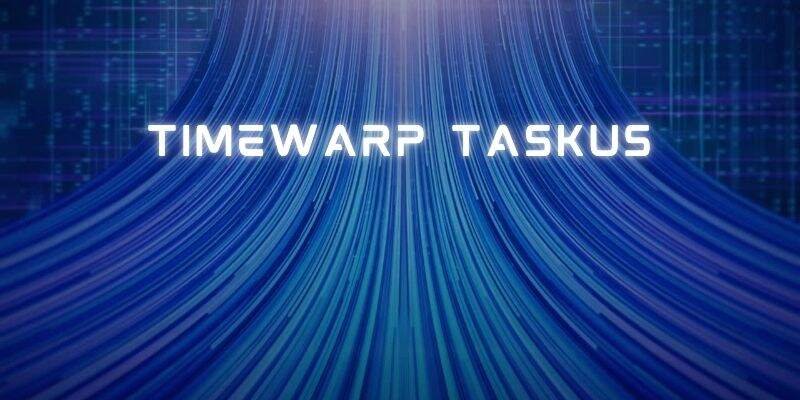Understanding Time Warp TaskUs
Time Warp TaskUs is an innovative productivity tool that has gained traction as a pivotal player in the realm of task management systems. At its core, Time Warp TaskUs integrates various task management features, enhancing the efficiency of workflow processes in various industries. This tool is designed to help individuals and teams optimize their time usage, increase accountability, and streamline communication throughout projects.
The origins of Time Warp TaskUs can be traced back to a growing need for more effective management solutions that address the complexity of modern work environments. As businesses evolve and adopt hybrid or fully remote models, the demand for systems that facilitate seamless collaboration has become paramount. Time Warp TaskUs emerged as a response to this challenge, providing users with a comprehensive suite of features that include task delegation, deadline management, and performance tracking.
The significance of Time Warp TaskUs lies not only in its ability to help users stay organized but also in its capacity to foster a culture of productivity. By incorporating elements that allow for real-time updates and feedback, Time Warp TaskUs plays a crucial role in assisting teams in achieving their goals efficiently. Understanding its diverse applications is vital for leveraging the tool effectively. For instance, creative agencies may use Time Warp TaskUs to manage project workflows, while tech companies might utilize it to oversee software development cycles.
In conclusion, at the intersection of technology and productivity, Time Warp TaskUs stands out as a versatile solution that simplifies task management and enhances collaborative efforts. Whether in a corporate environment or a creative industry, its impact on productivity is increasingly recognized, making it a valuable asset for organizations looking to improve their operational capabilities.
Benefits of Using Time Warp TaskUs
The adoption of Time Warp TaskUs presents a multitude of benefits that can significantly enhance both personal and professional productivity. One of the primary advantages of this innovative task management solution is its ability to improve time management skills. By organizing tasks in a visually compelling manner, Time Warp TaskUs allows users to prioritize their responsibilities effectively and allocate their time more efficiently. This structured approach helps individuals meet deadlines consistently while reducing stress associated with workload management.
Moreover, the collaborative features inherent in Time Warp TaskUs foster teamwork and communication among team members. Users can share tasks, update progress, and provide real-time feedback, which enhances transparency and engagement within the group. This collaborative aspect is particularly beneficial for remote teams, as it ensures that everyone remains informed and aligned with common goals. As tasks are updated in real time, employees can adjust their plans dynamically, further improving overall team performance.
Time Warp TaskUs also distinguishes itself from traditional task management solutions through its unique workflow capabilities. Traditional methods often rely on static lists or simple calendars, which may not accommodate the evolving nature of project demands. Conversely, Time Warp TaskUs provides a more fluid and adaptable approach, enabling users to visualize changes in their workflow graphically. This visual representation allows for quick identification of bottlenecks and task dependencies, facilitating more informed decision-making and enhanced efficiency.
In comparison to conventional tools, the intuitive interface and automation features of Time Warp TaskUs streamline repetitive tasks, ultimately saving time for users. With integrated reminders and notifications, it encourages timely action, thus improving accountability and progress tracking. These benefits collectively make Time Warp TaskUs an invaluable tool for anyone seeking to enhance their productivity and successfully manage their time.

Implementing Time Warp TaskUs: A Step-by-Step Guide
To effectively implement Time Warp TaskUs in your organization, the first step is to establish clear and measurable goals. Define what you hope to achieve through this innovative task management system, whether it’s increasing productivity, enhancing team collaboration, or reducing project turnaround time. Having specific objectives will provide direction and will facilitate the selection of the tasks that need prioritization.
Once your goals are defined, the next stage involves identifying the tasks that align with these objectives. Analyze your current workflow by reviewing ongoing projects and assessing which tasks would benefit the most from the Time Warp TaskUs approach. This step is critical, as it ensures that efforts are concentrated on high-impact activities that drive significant results.
The integration of Time Warp TaskUs into existing workflows should be carried out thoughtfully. Begin with a pilot test for a small team or project to evaluate how well the system aligns with your organizational structure. This smaller-scale implementation allows for troubleshooting potential challenges without disrupting the entire operation. During this phase, gather feedback from users to refine the user experience and optimize functionality.
Moreover, it is essential to ensure all team members are adequately trained on utilizing Time Warp TaskUs effectively. Organize workshops or training sessions that detail how to leverage its features to maximize productivity. This investment in training will foster a culture of collaboration, as team members will feel more confident in using the new system.
Throughout the transition, maintain open lines of communication to address any concerns that arise. Regularly review the implementation process against your initial goals, adapting strategies as necessary to ensure that the integration of Time Warp TaskUs is both smooth and effective.
Success Stories: Time Warp TaskUs in Action
The impact of Time Warp TaskUs on organizations and individuals is best illustrated through various success stories that highlight tangible results and positive transformations. One notable example comes from a mid-sized e-commerce company that integrated Time Warp TaskUs into their workflow. Initially struggling with long response times and inefficient task management, the company witnessed a shift in productivity within a month of implementation. By harnessing the power of Time Warp TaskUs, they were able to reduce their customer service response times by over 50%. This significant improvement not only enhanced customer satisfaction but also increased their overall sales by 20% as customers appreciated the prompt service.
Another illustrative case comes from a healthcare provider that utilized Time Warp TaskUs to manage patient inquiries and scheduling. Prior to the integration, the provider’s administrative team was overwhelmed by patient requests, leading to delays and errors. After adopting the Time Warp TaskUs system, the organization observed a 40% decrease in scheduling conflicts and an improved ability to handle patient queries efficiently. Staff reported feeling less stressed and more empowered in their roles, ultimately leading to a more positive atmosphere in the workplace.
Individuals within various sectors have also benefited from Time Warp TaskUs. A freelance graphic designer shared their experience of using the platform to manage multiple client projects simultaneously. By organizing tasks according to deadlines and priorities, the designer increased their output while maintaining quality. They revealed that the seamless integration of Time Warp TaskUs led to a 30% increase in completed projects, allowing them to expand their client base significantly.
These real-life success stories serve as compelling evidence of how Time Warp TaskUs enhances productivity and performance. By showcasing its effectiveness across different industries, it becomes evident that adopting this innovative approach can yield replicable results for those seeking to improve their own task management and productivity levels.





Leave a Reply